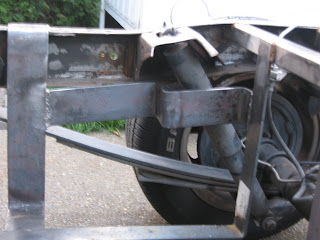Yes, I'm still working on the rear battery rack. :) One more day and I should have the rear rack finished.
First I prepped the flat bar cross member that I bent yesterday. I'm using the wire attachment on the Makita to remove the rust.
Prepping the frame...
Measuring the distance at the top of the new cross member to make sure that its slightly more (1/2 inch) than the 31 inches at the bottom of the cross member. This will allow the battery box to slide in easier. The cross member is clamped into place and I tapped it into position with a hammer.
Then I welded the cross member into place.
In case you're wonder what welder I'm using...
It's a Lincoln Power Mig 140c Welder. I'm not using MIG right now just .035 inch Flux Core Welding Wire and it seems to be working great for this application. The bottle on the back of the welder currently is Argon which I use when I am welding aluminum. I use argon with the spool gun pictured below.
.035 inch Flux Core Welding Wire
100 SG spool gun used for welding aluminum and other types of metal.
Anyway, back to business here...Then I wire brushed the area where the flat bar cross member supports meet, clamped them together, and welded all three of them in place. That's it for tonight.





























